The American Red Cross
during World War I
.
The American Red Cross rapidly expanded after receiving its 1905
Congressional charter. Separate Red Cross services were created for Nursing,
First Aid, Lifesaving and Sanitation. Health care awareness and traffic
safety (then mostly railroad and streetcar) was emphasized. In 1908 the
American Red Cross began using a paid staff of technical experts to oversee
and coordinate its mostly volunteer workforce.
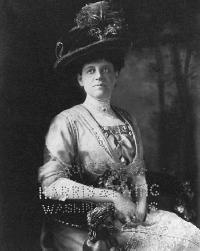 |
.. |
Mabel Boardman
She was elected to the Red Cross
governing board in 1901. Although she always remained a volunteer and never
took over the highest executive position in the ARC, she was considered
as the organization's real chief most of the time. Under her guidance many
new Red Cross programs started. She resigned in 1944. |
.
The outbreak of World War I during 1914 revived the "romance" of
civilian battlefield assistance that lingered from its Civil War heritage.
However, much of the early enthusiasm was rather naive.
.
| For example, a "mercy ship" filled with doctors, nurses and medical
supplies was quickly dispatched to the European war zone to help wounded
of every nation in an atmosphere of strict neutrality (this particular
experiment lasted only six weeks). |
... |
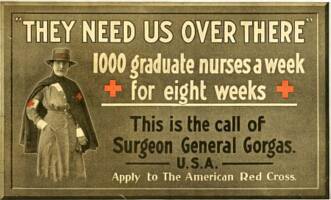
|
.
Meanwhile, the American Red Cross was transformed completely to
adapt to its new role as a civilian war emergency relief foundation. Mabel
Boardman lost most of her authority as President Wilson's War Council shifted
its allegiance to Eliot Wadsworth. Wartime patriotism filled the American
Red Cross with throngs of eager volunteers and increased funding through
well-organized War Fund drives.
.
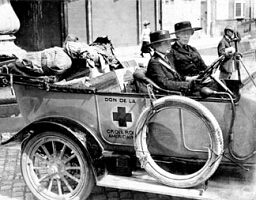 Transporting supplies in
an
Transporting supplies in
an
American Red Cross car in 1917
|
... |
The American Red Cross was able to add a Motor Corps (initially
transport of donated supplies), a Canteen Service (soldier welfare buses),
a Production Service (initially bandage-making) and a Home Service (soldier
cable contact with hometowns). The Junior Red Cross was formed for participation
by schoolchildren. |
.
When the United States declared war in 1917, the well-financed and
socially popular American Red Cross fielded an active civilian contingent
overseas that helped with innumerable humanitarian projects and provided
soldier assistance from hospitalization to rehabilitation.
.
| The Red Cross did an important job in recruiting about 20,000
Red Cross nurses for the Army Nurse Corps and the Navy Nurse Corps. In
embattled France, the Red Cross operated from 551 locations to assist the
Army with base hospitals; ambulance and dietitian services; morale support
to expeditionary troops (including 75 railway canteens); health care and
supplies. |
.... |
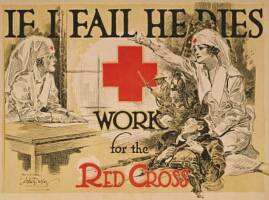
|
.
 |
. |
Much American Red Cross work was extraordinary. Care packages and
mail parcels were delivered to prisoners through coordination with the
German Red Cross, a breakthrough in international cooperation. The new
Red Cross Outpost Service drove stoves to the front trenches to offer hot
food. Red Cross dogs (trained by female handlers) rescued wounded and gassed
soldiers by directing litter teams into no-man's land. |
.
| Finally, during the lethal 1918 influenza pandemic
that came at the end of the war, the Red Cross responded with 15,000 nurses
and other healthcare practitioners under the US Public Health Service.
Red Cross female volunteers proved their sturdiness and several died
in the performance of their voluntary duty. |
.. |
|
.
Between the World Wars
.
 |
.. |
Following World War I, the Red Cross maintained
hospitals, convalescent homes and living facilities for millions of war
refugees within Europe.
In Asia, Red Cross "white trains" operated
inside Siberia (where American troops safeguarded the Trans-Siberian Railroad)
to relieve distress in that region.
The American Red Cross provided vital assistance
to Japan after the devastating Tokyo earthquake. |
.
| The postwar Red Cross concentrated on problems
at home. Many volunteers served at veteran community hospitals.
The Red Cross became heavily involved in the
Great Depression and the resulting unemployment crisis.
Nearly 2,500 public health nurse services insured
continued medical care where local resources were lacking. |
.. |
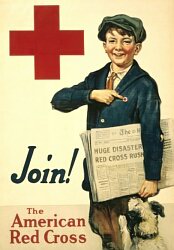 |
 |
. |
The Red Cross intensified disaster preparedness
programs. During tornado and flood emergencies, Red Cross medical and technical
personnel arrived to give free medical care, distribute food and clothing,
arrange shelter and help register and account for victims.
During 1938, the widespread adoption of popular
uniforms greatly increased volunteer ranks. |
|
